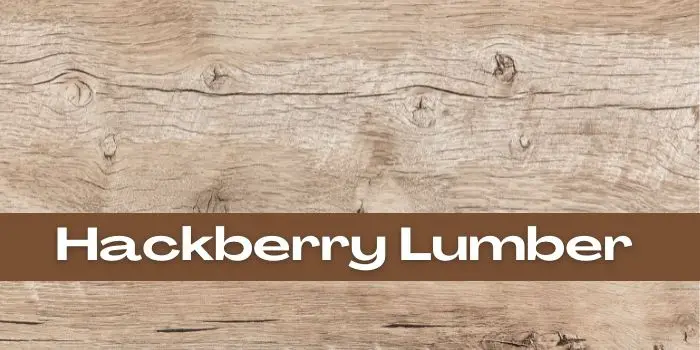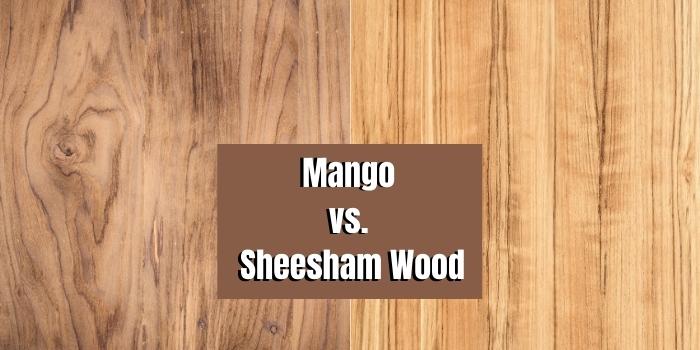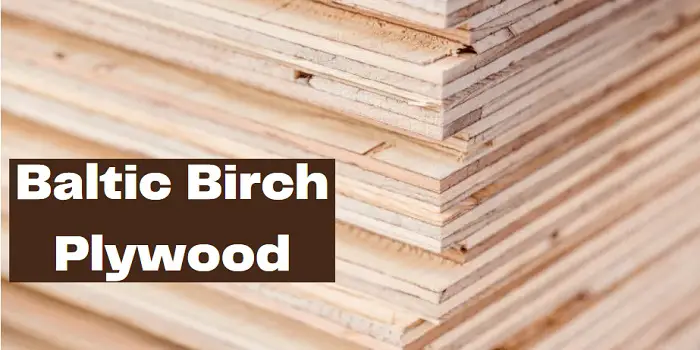
The Hackberry can grow upwards of 60’ in height while having a trunk diameter that may reach 2’ in circumference. The tree itself is mostly found in the eastern section of the United States. However, it is also widely available in Canada.
While not the most common of all wood in North America, Hackberry is widely used for a variety of projects.
Perhaps its most notable ability is how the wood will easily bend when exposed to steam. And that’s the reason you’ll find many wood projects that use bent wood pieces that are made from Hackberry.
Hackberry Lumber
| Scientific Name: | Celtis occidentalis, Celtis laevigata |
| Tree Size: | 40-60 ft (12-18 m) tall 1-2 ft (.3-.6 m) trunk diameter |
| Janka Hardness: | 880 lbf (3,910 N) |
| Type: | Hardwood |
| Odor: | Mild smell |
| Specific Gravity (Basic, 12% MC): | .49, .60 |
| Common Uses: | Boxes/crates, veneer, turned objects, and bent parts |
Color
Hackberry does have the basic appearance of ash and can be used as a substitute.
The heartwood tends to range from gray to light brown in color. The sapwood contrasts with the heartwood by mostly being light yellow.
If the wood is not properly stained, it will be subject to a fungus that generates staining ranging from blue to gray in color.
Therefore, it is highly recommended that you stain the wood promptly after finishing the project to minimize fungi intrusion. Otherwise, the wood itself has the appearance of ash.
Texture & Grains
The overall texture tends to be uneven and coarse. While the grain may be interlocked in some areas, it is mostly straight.
You may see some slight interlocking in some pieces, but overall, you can expect the grains to be straight in the wood.
Hackberry is subject to insect attacks and intrusions by fungus. It is why the wood is rated as perishable and non-durable.
This means that the wood will need protection once the project is finished. Otherwise, you may be looking at a quickly perishing wood due to its vulnerabilities.
Hackberry Lumber Workability
Hackberry is a good wood for beginners because it can be easily cut and shaped using either manual or powered tools.
There will be challenges with the sections of the wood that have knots or interlocking grains. However, if you are into steam-bending wood for various projects, Hackberry is an excellent choice. It also finishes, glues, stains, and turns well, making it quite workable for most projects.
You may detect a mild odor with Hackberry, particularly if you are working with wood.
The wood itself is known to cause some mild skin irritation, so you will want to wear long sleeves and gloves when working with the wood. Otherwise, few serious allergic reactions have been noted with Hackberry.
What is Hackberry Lumber Used for?
Hackberry is often used to create a veneer, bent parts, furniture, boxes or crates, and turned objects. It is a common enough species and not listed on any endangered list.
Because it is not readily available outside of where it is grown, Hackberry may be rather expensive to import. However, within the confines of the US, you can find this product at a modest price. Pieces that are stained or spalted tend to be more expensive.
When shopping for Hackberry, you may often find it sold with a very similar type of wood known as Sugarberry.

Hi, I am Mark Garner a professional carpenter, woodworker, and DIY painter. I live in the small city of Peoria, Arizona as a semi-retired woodworker. I have started this blog with a simple motive to help you with my wood experience in this sector. If you like to know more about what I love doing and how it all got started, you can check more about me here.




